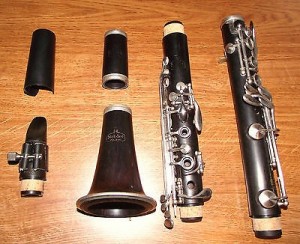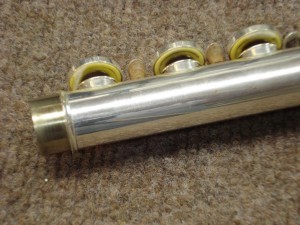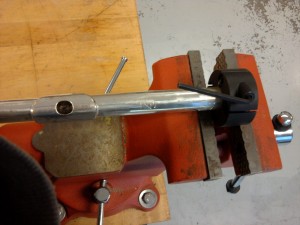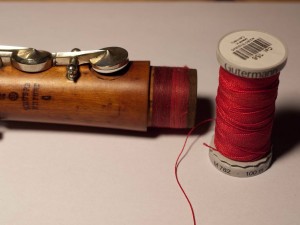A tenon is the smaller end of a woodwind instrument. On a clarinet, oboe, or bassoon it is the end with a cork on it. On a saxophone and a flute it is a metal to metal connection. The tenon fits onto the next joint of the instrument on the part called the socket. The fit of the tenon is very important to the playability of the instrument. Let us first examine the cork tenons.
On all cork tenons the cork needs to be lubricated in order to smoothly fit the joints together. Most people use cork grease to help ease them together but players can also use paraffin wax. Wax is a little better for the longevity of the cork and it is also less messy! If the joints are fitting together too loosely then it may be time to replace the cork. The instrument might also have some deeper issues with the shoulder of the tenon and it could potentially need more extensive care with a silk wrap or a tenon sleeve. In the worst case scenario it could need to be replaced. If the joints are too tight it could be that the instrument needs a little more lubrication. If that’s not the case, it could also be that the joints need to be sanded and you should definitely take it to a repair shop.
Now let’s look at metal tenon connections. One of the biggest mistakes on flute and saxophone is that players think using cork grease will help put the joints together. It is fit very specifically to not need any lubrication. If the instrument is having trouble going together it is because something is out of alignment and you should take it into the repair shop. It might also be because the instrument is dirty. Take a clean cloth and rub the area on the tenon and also inside the socket. If the dirt is not coming off easily you can also use a little bit of alcohol on the cloth. If cleanliness is not the issue then any local repair shop will have the shrinking and expanding tools needed to fit the joint properly.
The last tenon connection you might see is a threaded tenon. They are typically found on bassoons but can also be used on clarinets and recorders. They are sealed with paraffin wax and when they become loose definitely need to be taken into the shop. Generally they are red in color but can be any shade in the rainbow.
Hopefully with all of this new tenon information you will have a better understanding of how your instrument works. If you have any questions, never hesitate to contact our shop!





